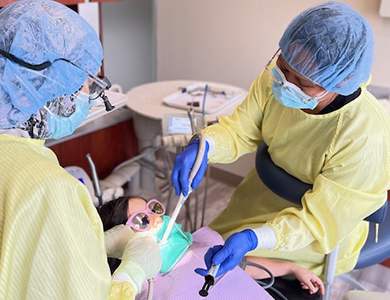A Beginner’s Guide to Standard Braces: What to Expect
Blog:A Beginner’s Guide to Standard Braces: What to Expect

If you’re considering standard braces for yourself or your child, you might have questions about the process, what to expect, and how to care for them. Braces have been a reliable orthodontic treatment for decades, helping to straighten teeth, correct bite issues, and improve overall oral health. This guide will walk you through the basics of standard braces, including the treatment process, potential discomfort, and how to maintain them for the best results.
Understanding Standard Braces
Standard braces, also known as traditional metal braces, consist of metal brackets attached to each tooth, connected by a wire that gradually shifts the teeth into proper alignment. Small elastic bands help hold the wire in place and can be customized in different colors.
Unlike clear aligners, which are removable, standard braces are fixed to the teeth and are adjusted periodically by your orthodontist to ensure progress throughout the treatment.
The Braces Process
• Initial Consultation – Your dentist will evaluate your teeth, take X-rays, and discuss your treatment plan. If necessary, additional procedures like tooth extractions or spacers may be recommended before getting braces.
• Braces Placement – The brackets are bonded to your teeth, and a wire is threaded through them. This appointment typically takes one to two hours.
• Adjustment Period – It’s common to feel some discomfort in the first few days as your teeth and mouth adjust. Over-the-counter pain relievers and soft foods can help ease any soreness.
• Regular Adjustments – Every few weeks, you’ll visit your orthodontist for adjustments. These appointments help gradually shift your teeth into alignment.
• Oral Hygiene & Maintenance – Maintaining good oral hygiene is essential. Brushing after every meal, flossing with special orthodontic tools, and avoiding sticky or hard foods will help keep your braces in top shape.
• Braces Removal & Retainers – Once your treatment is complete, the braces will be removed, revealing your newly aligned smile. A retainer will be provided to help maintain your results and prevent teeth from shifting back.
Common Concerns About Braces
Will Braces Hurt?
While there may be some discomfort, especially after adjustments, the pain is usually mild and temporary. Most patients experience soreness for a few days after getting braces or after a tightening appointment, but this can be managed with over-the-counter pain relievers and a soft-food diet.
How Long Will I Need to Wear Braces?
The duration of braces treatment varies depending on individual needs. On average, most patients wear braces for 18 months to three years. Factors such as the severity of misalignment, age, and adherence to orthodontic guidelines can influence the length of treatment.
What Foods Should I Avoid?
Certain foods can damage the brackets and wires of braces, leading to potential delays in treatment. It’s best to avoid hard, sticky, and chewy foods such as popcorn, gum, caramel, and hard candies. Instead, opt for softer foods that are easier to chew and won’t put pressure on your braces.
Can I Still Play Sports or Instruments?
Yes! If you play contact sports, wearing a mouthguard can help protect your braces and teeth from impact. For those who play wind instruments, there may be a short adjustment period as you get used to playing with braces, but with time, most musicians find they can play just as comfortably as before.
Start Your Journey to a Straighter Smile Today
Getting braces is a significant step toward achieving a healthier, more aligned smile. While there may be an adjustment period, the long-term benefits of improved dental health and confidence make the process worthwhile. By following your dentist’s advice, maintaining good oral hygiene, and attending regular check-ups, you can ensure the best results from your braces treatment.
If you’re ready to start your orthodontic journey, schedule a consultation with Shifa Dentistry and take the first step toward a confident smile. Visit our office in Ottawa, Ontario, or call (613) 521-3939 to book an appointment today.



